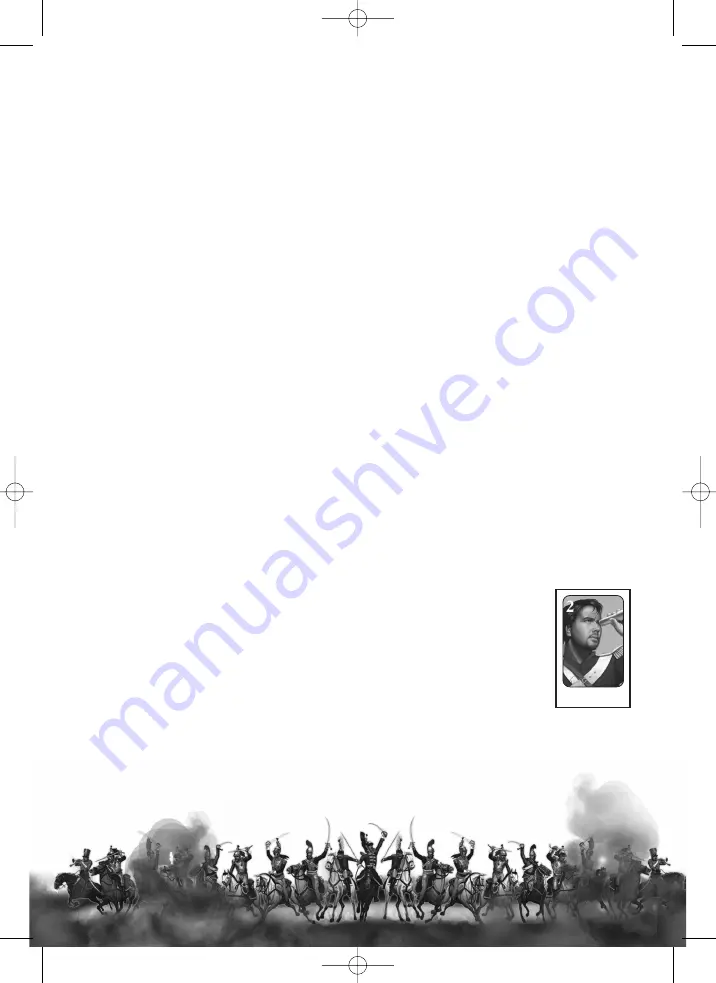
The playing pieces and formation:
The players take the sorting table that matches the colour of their pieces.
Each piece has its own illustration and number indicating its rank. The field Marshal has the highest rank
and has been assigned the number 10, the General has a 9, etc., down to the Spy with the number 1. Only
the bombs and flag do not have a number because they have a special role in the game.
You position your pieces on the bottom four rows of the game board. You place them with their back to
your opponent so that you alone can see the illustrations. The two middle rows (with the lakes) remain
empty. No playing pieces may be placed here when setting up the game.
Setting up the board is an important part of the game. It determines whether you win or lose. You will find
some useful tips at the end of these instructions.
Once the players are ready after setting up their playing pieces, the screen is removed. The sorting
tables are placed next to the board. The pieces that are removed from play during the game must be
placed here so that your opponent can also see which pieces you have already taken. The sorting tables
are numbered so that you can see where to place the pieces taken during the game.
Course of the game:
Red starts. The players then move their pieces in turns. You move a piece to an empty field or to a field
occupied by one of your opponent’s pieces. The latter option is called an attack. Each player may only
move a single piece during his or her turn!
Moving:
You can move a piece one place to the left or right, or one place forwards or backwards.
The Scout (number 2) is an exception to this rule; more details below.
Each field can accommodate one piece only; the pieces cannot jump over other pieces and they may
not be moved diagonally.
The playing pieces may not be positioned in or jump over the two lakes in the centre of the board.
You may not continuously move a piece back and forth between the same two fields. The limit here is set
at three moves. It is important then to determine which player began moving to and fro. This player has
to stop first too, and this could lead to losing an important piece. The rule is known as the ‘two field’
moves rule.
You may also not continuously pursue one or more of your opponent’s pieces. If this happens
(and extends across more than two fields) the aggressor must stop this at once.
The bombs and the flag may never be moved and therefore remain in the same place
throughout the duration of the game.
Special rules apply to the Scouts (2). Scouts can jump over an unlimited number of
empty fields. Of course, they can only do so in a straight line, i.e. to the left, to the right,
forwards or backwards. As far as they can as long as the fields are empty because they
cannot jump over their own army’s pieces or those of the enemy. Neither can they
jump over the lakes. Scouts are the only pieces that can launch an attack from a
sizeable distance.
Attacking
If one of your pieces is immediately in front of, next to or behind one of your opponent’s pieces,
you can attack that piece.
Attacks are launched as follows: you take your piece, tap the enemy piece and say the rank
(or number) of your piece. Your opponent then says the rank (or number) of his or her piece.
Scout
INT Strat Orig Rules.qxd 16-05-2006 10:57 Pagina 18






























